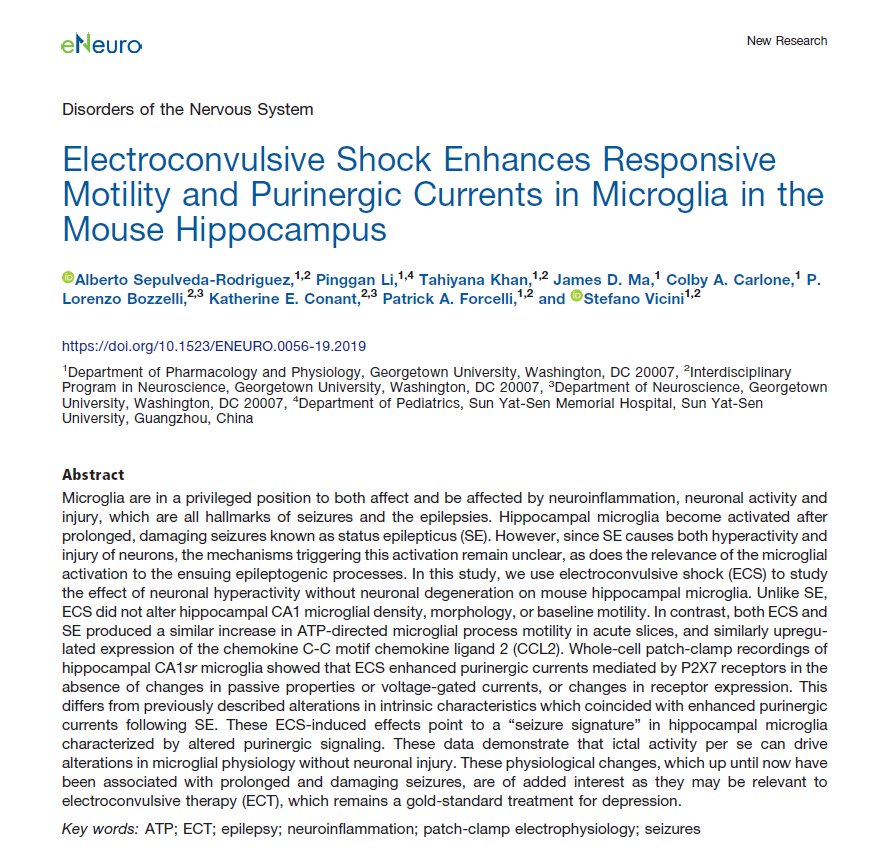
- July 08, 2019
Electroconvulsive Shock Enhances Responsive Motility and Purinergic Currents in Microglia in the Mouse Hippocampus
Alberto Sepulveda-Rodriguez, Pinggan Li, Tahiyana Khan, James D. Ma, Colby A. Carlone, P. Lorenzo Bozzelli, Katherine E. Conant, Patrick A. Forcelli, and Stefano Vicini | Department of Pharmacology and Physiology, Georgetown University, Washington, DC 20007, Interdisciplinary Program in Neuroscience, Georgetown University, Washington, DC 20007, Department of Neuroscience, Georgetown University, Washington, DC 20007, Department of Pediatrics, Sun Yat-Sen Memorial Hospital, Sun Yat-Sen University, Guangzhou, China | 2019 | eNeuro: vol 6 no 2 e0056-19.
Microglial are macrophages present in the brain to monitor neuronal health and respond to injury. Microglia are known to both affect and be affected by neuroinflammation, neuronal activity and injury, which are all hallmarks of seizures and the epilepsies. It is thought that noninflammatory changes in microglial may be a contributor to epileptogenesis. In this study, electroconvulsive shock (ECS) was used to study the effect of neuronal hyperactivity without neuronal degeneration on mouse hippocampal microglia. The microglial was isolated and its RNA was extracted for mRNA expression analysis by two-step RT-qPCR, performed on the Mic Real-Time Cycler. These ECS-induced effects point to a “seizure signature” in hippocampal microglia characterized by altered purinergic signaling. The data demonstrates that ictal activity can drive alterations in microglial physiology without neuronal injury. These physiological changes have previously been associated with prolonged and damaging seizures. These changes are of interest as they may be relevant to electroconvulsive therapy (ECT), which remains a gold-standard treatment for depression.
Read More